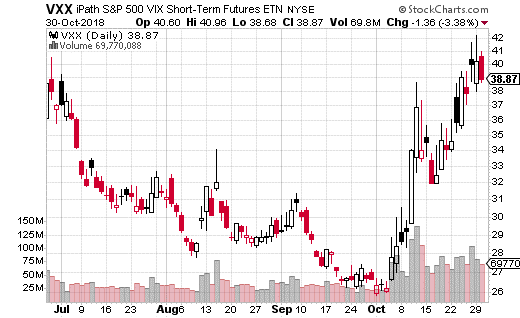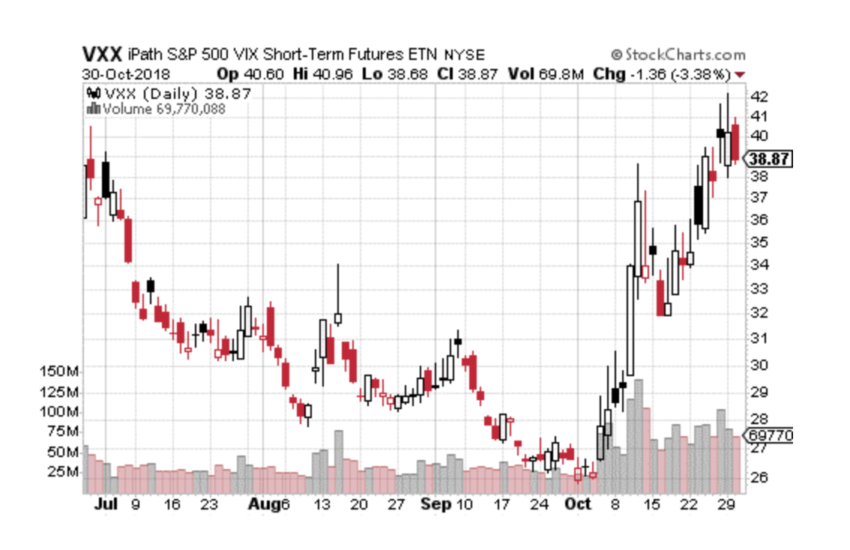Market volatility has essentially become a mainstream metric in the investment realm – especially for anyone who does any short-term trading. Most traders are now aware of what the VIX is and how a higher level in the volatility index usually means more uncertainty in the market.
While investors and traders may not be able to explain what the VIX actually is (the implied volatility of S&P 500 options), they do realize it’s important to keep an eye on market volatility. Generally speaking, higher volatility levels can precede a selloff in stocks. Conversely, a falling VIX may give us an “all clear” signal during more tumultuous times.
Options traders should be more intimately familiar with the concept of volatility. Since volatility is the key component in the calculation of options prices, it is vital for active options traders to have at a least a basic understanding of how it works.
One thing I’ve noticed while speaking at the MoneyShow and Traders Expo investment conferences is that traders appear to have a growing interest and understanding of volatility. It’s definitely an encouraging trend. The more options traders (and stock traders for that matter) understand about volatility and how it impacts the market, the better chance they have of avoiding catastrophic losses.
But here’s the thing…
Volatility doesn’t just tell you when to get out of your long positions. It can also be a great signal for when to get back in the stock market. For example, if the VIX is headed lower after a turbulent period in stocks, it could mean that investors aren’t hedging as much because the feel the uncertainty is coming to an end.
When volatility spikes, I like to look at the options action on volatility ETPs (exchange traded products) such as iPath S&P 500 VIX Short-Term Futures ETN (NYSE: VXX). VXX is a widely popular ETN used to trade short-term volatility. VXX will go down when front-month VIX futures (the VIX itself is not tradable) move down. Thus, it’s an easy way to bet on volatility going down (without having to trade futures).
What’s more, bearish options action in VXX could be a sign that traders expect volatility to come down in the near future. For instance, I recently came across a bear call spread – a call spread sold for a credit – which predicts that VXX isn’t going to keep climbing prior to mid-November.
More specifically, with VXX right around $40, a trader sold 6,500 November 16th 45-60 call spreads for $1.21 credit per spread. That means the trader sold the 45 call and bought the 60 call at the same time. The strategy reaches max profit as long as VXX is under $45 by expiration.
If VXX stays below $45, the trader could pocket $786,000 dollars. However above $46.21 (the breakeven point) the call spread seller could lose $650,000 per dollar higher – all the way to $60. In other words, this could be a very risky strategy.
The strategist who placed this trade clearly believes VXX isn’t going much higher in the next two weeks and more likely, is headed lower. Keep in mind, once mid-term elections and the FOMC meeting are over with in the first full week of November, there may not be much action heading into the Thanksgiving holiday. That is to say, I think this trade makes a lot of sense.
Nevertheless, selling potentially risky call spreads is not a strategy I recommend for most options traders. In fact, I believe it’s far easier to simply buy a put spread on VXX instead.

If you think volatility is going to drop after the mid-term elections/FOMC meeting, buying the 37-34 put spread (buying the 37 put, selling the 34 put) can be done for about $1.20 with VXX at $39. That’s a reasonable price to pay given how quickly volatility can move (up or down). Moreover, the trade can max out at 150% gains if VXX drops to $34 or below by expiration.
